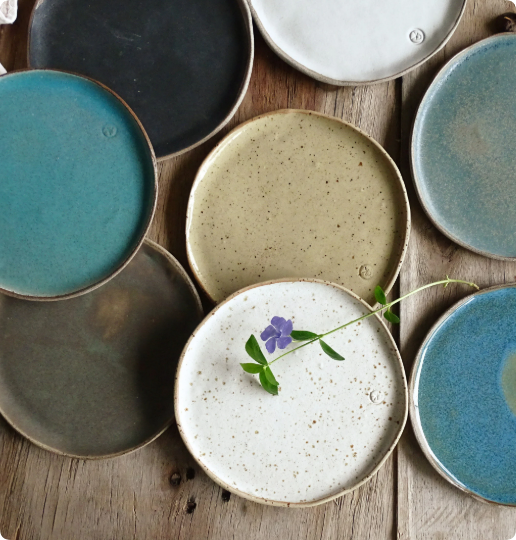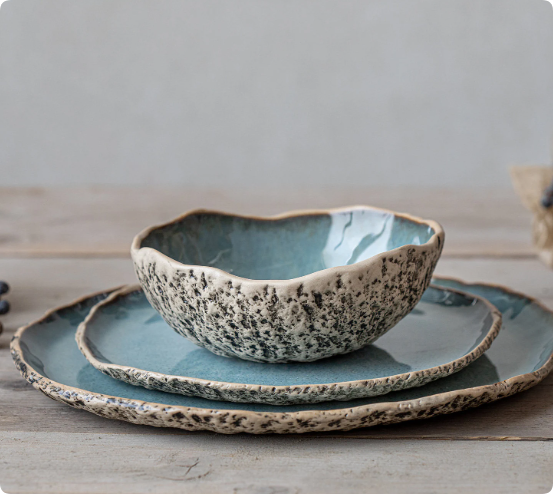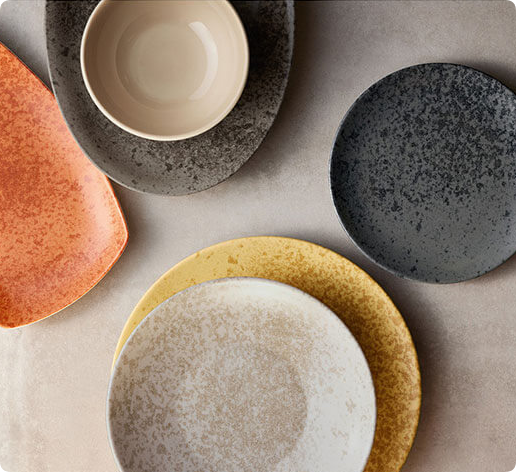In recent years, sustainability has become a key driver in the global market, affecting various industries, including ceramics. As eco-conscious consumers demand greener alternatives, manufacturers of ceramic dinnerware face new opportunities and challenges in creating products that align with environmental concerns. At EKA, a leading Chinese ceramic production factory specializing in OEM and ODM orders, we understand the growing importance of eco-friendly dinnerware and the evolving trends in this market.
This blog explores the rise of eco-friendly ceramic dinnerware, highlighting the key factors manufacturers must consider, including materials, production processes, and consumer preferences. Additionally, we will examine trends in the eco-friendly dinnerware sector, providing insights into how businesses can adapt to meet the demands of sustainability-driven consumers.
1. The Shift Toward Sustainable Dinnerware
The global shift towards sustainability is not just a passing trend; it is a response to growing concerns over environmental degradation. As consumers increasingly seek products that reflect their values, manufacturers are compelled to evolve. Ceramic dinnerware, traditionally made from natural clay, has long been regarded as a durable and aesthetically pleasing choice for home dining. However, as environmental awareness rises, consumers now expect these products to meet higher sustainability standards.
Key aspects of eco-friendly dinnerware include:
- Materials: The use of renewable, non-toxic, and natural materials such as clay, recycled ceramics, and organic glazes.
- Production processes: Eco-friendly manufacturing techniques that minimize waste, reduce energy consumption, and lower carbon emissions.
- Packaging: The adoption of minimal or recyclable packaging that reduces the environmental footprint of products.
2. Materials: What Makes Ceramic Dinnerware Eco-Friendly?
When it comes to eco-friendly ceramic dinnerware, the materials used play a crucial role. As manufacturers, it is essential to understand the various types of materials available and how they impact the environment. Here, we will compare the traditional materials with the more eco-conscious alternatives:
| Material Type | Description | Environmental Impact |
|---|---|---|
| Traditional Clay | Standard natural clay, often mixed with synthetic additives. | Generally sustainable, but can involve mining and energy-intensive processes. |
| Recycled Ceramics | Made from crushed and repurposed ceramic products. | Reduces waste and requires less energy than new clay. |
| Non-Toxic Glazes | Glazes free from harmful chemicals such as lead and cadmium. | Minimizes health risks and environmental contamination. |
| Organic Materials | Uses plant-based glazes and natural dyes. | Reduces reliance on synthetic chemicals, making it more eco-friendly. |
Using recycled ceramics is a particularly effective way for manufacturers to reduce waste. It involves repurposing leftover or broken ceramic products, transforming them into new pieces without requiring additional mining of raw materials. This not only conserves natural resources but also minimizes the carbon footprint associated with the production process.
3. Eco-Friendly Manufacturing Processes: What to Consider
Eco-conscious consumers are increasingly looking for products that are made using energy-efficient and environmentally responsible methods. The production process is a crucial component of an eco-friendly ceramic product. Manufacturers should consider the following factors to reduce their environmental impact:
- Energy Efficiency: Switching to more energy-efficient kilns and production equipment can significantly reduce energy consumption.
- Water Conservation: Implementing water-saving measures during the production process, such as recycling water used for cleaning molds and equipment, can help minimize waste.
- Waste Reduction: Reducing material waste by optimizing design and production techniques, as well as reusing excess materials, is key to an eco-friendly approach.
- Green Certifications: Obtaining certifications such as ISO 14001 (Environmental Management) or the Green Seal certification can provide credibility to manufacturers committed to sustainable practices.
At EKA, we continuously strive to improve our manufacturing processes to be more sustainable, from energy-efficient kilns to the careful management of water usage.
4. Consumer Trends: What Do Buyers Want?
Understanding consumer behavior is essential for manufacturers seeking to tap into the eco-friendly dinnerware market. With millennials and Gen Z leading the charge in sustainability, there are a few key factors driving demand for eco-friendly ceramic dinnerware:
- Aesthetic Appeal: While sustainability is crucial, consumers still want dinnerware that looks good. Natural textures, organic shapes, and earthy colors are popular among eco-conscious buyers.
- Durability: Eco-friendly ceramic dinnerware must not only be sustainable but also durable. Consumers want products that last, reducing the need for frequent replacements.
- Price Sensitivity: While eco-friendly products often come at a premium, there is growing consumer willingness to pay more for items that align with their values. However, manufacturers must strike a balance between sustainability and affordability.
- Transparency: Consumers increasingly value transparency in the production process. Brands that openly share information about sourcing materials, manufacturing processes, and sustainability efforts are more likely to build trust with buyers.
5. EKA’s Approach to Eco-Friendly Ceramic Dinnerware
At EKA, we are committed to producing high-quality, eco-friendly ceramic dinnerware that meets the needs of modern consumers. Our focus is on using recycled ceramics, non-toxic glazes, and energy-efficient production methods to create products that are not only beautiful but also environmentally responsible.
For businesses in the B2B market, offering eco-friendly ceramic dinnerware can be a powerful selling point. EKA works closely with homeware distributors, gift suppliers, and cross-border e-commerce sellers to ensure that our products meet global sustainability standards. With our flexibility in both OEM and ODM orders, we can customize designs and production volumes to suit the needs of our clients, helping them expand their eco-friendly product ranges.
6. The Future of Eco-Friendly Ceramic Dinnerware
As the demand for sustainable products continues to grow, the future of eco-friendly ceramic dinnerware looks promising. Innovations in materials, production methods, and consumer preferences will continue to shape the market. Manufacturers who embrace sustainability as a core principle will be better positioned to succeed in this evolving landscape.
For manufacturers looking to stay ahead of the curve, focusing on the following trends will be essential:
- Integration of Smart Technology: The use of smart sensors in ceramic production to monitor energy use and reduce waste.
- Collaborations with Eco-Friendly Brands: Partnering with eco-conscious brands and retailers to promote sustainable products.
- Expanding Market Reach: Targeting emerging markets where eco-friendly products are gaining traction, such as Southeast Asia and Latin America.
By embracing sustainability, manufacturers can not only meet consumer demands but also contribute to a more sustainable future.
Conclusion
The rise of eco-friendly ceramic dinnerware represents a significant shift in the industry, driven by consumer demand for sustainability. Manufacturers who understand the importance of eco-friendly materials, production processes, and consumer trends will be best positioned to succeed in this growing market. At EKA, we are dedicated to offering sustainable, high-quality ceramic products that cater to the evolving needs of B2B clients worldwide. As sustainability continues to shape the future of ceramics, the opportunities for eco-friendly ceramic dinnerware manufacturers are limitless.
By adopting eco-friendly practices, manufacturers can play a pivotal role in creating a greener, more sustainable world.




